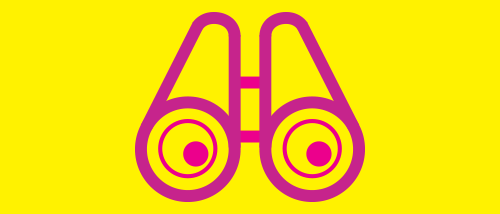Stop “Helicopter Parenting” Your Brand
ECD John Paolini explains why, as much as we want to keep our brand (and kids) safe from the real world, we need to learn to let go

This article originally appeared in Campaign Magazine on August 28, 2016.
As I get ready to send my daughter back to school, I’m feeling protective: watching over each moment, making sure she has everything in order, and wishing the first day of school wasn’t right around the corner. It’s our instinct as parents to hold on as long as possible.
As branding experts, we feel the same way about the brands we develop. We want to see them grow and blossom, and strike the right balance between standing out for their unique talents and being accepted. And we desperately want to keep them safe from mistreatment and misinterpretation in a rapidly changing world.
But as much as we want to protect them, studies have shown that helicopter parenting just doesn’t work with our children and over-regulating won’t work with brands, either. Sooner or later, people will interact with them, and ultimately help shape them into something different and hopefully better.
The best thing we can do? Recognize that growth and evolution are good, and create brands in a way that prepares them for these inevitable changes.
Introduce ideas, not rules. Putting your brand into action isn’t about following rules—in fact, it’s not about having rules, period. Too many companies create rigid guidelines and define highly-constrictive use-cases that make it difficult for teams to innovate. They think these rules protect and build brand value, but they do the opposite: strict guidelines breed rebellion when people can’t find the freedom to make the brand work for them within the boundaries.
Instead, try instilling brand ideas and showing how those ideas come to life through different touch points. In guidelines, don’t just include examples of templates—include examples of behaviors, interaction design, and other illustrative applications that embody the brand. Nike, for example, is built around one core value: everybody is an athlete. In their guidelines, they could point to a range of more traditional examples of that value: the Swoosh, the photography style, the copy tone and manner, but they could also include examples like the Nike+ Run Club; a new running app; and the U.S. team’s new track-and-field system, which pushes the Nike visual system.
Encourage smart failure. Inside organizations, brand groups can get pigeonholed into the “policing role,” which can lead marketing teams to believe they shouldn’t try anything new or push boundaries, often creating negativity between brand teams and marketing/sales. This is a shame, and in a world where brands continually need to push the envelope, it can be deadly. We need to find ways to encourage our teams—strategists, designers, technologists—to try new things and create work that pushes the envelope in a smart way.
Hiring is the place to start. Yes, it’s about finding talented people—but it’s also about identifying smart risk-takers: those who are willing to take chances and create work that amazes people. Some agencies set up incentives to reward “heroic failure”: giving out medals or creating spaces to share beloved work that never saw the light of day. Google X, often called the company’s “moonshot factory” for its focus on crazy, big-picture challenges, rewards teams for failing forward, noting that it’s only through this approach that we arrive at things like the self-driving car. This is the way we need to look at branding and design, too.
Don’t force square pegs into round holes. Sometimes organizations try to translate guidelines for one use directly to another, rather than seeing a new use case as an opportunity to find a different way to create a branded interaction. This happens often with university seals. Schools rightfully see these marks as important, but they were not built for a digital age, and when forced into use as a Twitter icon, or onto a site homepage, the seal just doesn’t work as well, and websites end up looking like an online brochure rather than becoming a truly digital representation of the institution.
Give people a framework to play with your brand. As much as we want to have sole ownership over everything with our name on it, this simply isn’t how brands operate today. Brands are owned by those who actually use it—your salespeople, fans, customers. They’re going to take liberties and experiment with our brands anyway; we need to give them the frameworks to do so in a way that aligns with the brand idea.
Airbnb has done that recently with its “community-owned” brand. After redesigning its logo and visual identity, the company began encouraging its hosts to adapt the system, saying it “actively want(s) our community to mess with the logo and identity.” The company created a new microsite with 50+ colors and patterns, and even an online store where hosts can print stamps, bags, and business cards that feature their own Airbnb brand system.
It’s only natural to feel protective. But unlike in the early, rigid days of branding, we are not building a monument to a company; instead, we’re creating ideas that will govern a living, breathing thing. It’s time to be proactive and welcome the democratization of brands: by changing our attitudes, loosening our grips, and building brands in a way that that gives them room for healthy growth.


